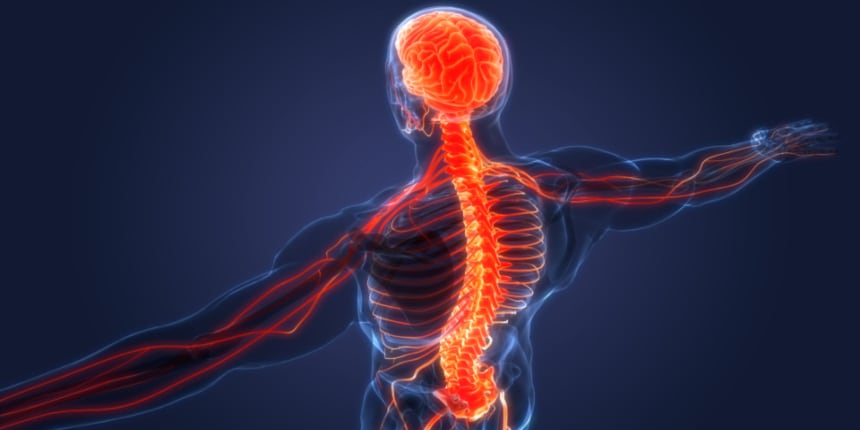CNS Full Form
What is the full form of CNS?
The full form of CNS is the Central Nervous System. The brain and spinal cord make up the CNS. It is the most significant organ in our body since it regulates how both the body and the mind work. It regulates a variety of bodily processes, including breathing, heart rate, blood pressure, digestion, and sleep cycles. The brain serves as a computer that manages every bodily function. The brain is where memory, intelligence, and thought occur. The information that the nerves receive is processed by it. The spinal cord is a crucial organ that serves as the brain's interpretive hub for external stimuli and controls how the motor nerves transmit appropriate responses.
- What is the full form of CNS?
- The Brain
- The Spinal Cord

The Brain
The brain is around 60% fat, and the remaining 40% is combinations of water, protein, carbohydrates, and salts. It weighs about 3 pounds in a typical adult. The brain is the largest and central organ of the human nervous system.
It acts as the control unit of the nervous system responsible for remembering and understanding, making decisions etc. The brain is enclosed within the skull, which protects its frontal, lateral and dorsal sides.
The human brain is majorly composed of three parts as follows:
The forebrain makes the anterior part of the brain that consists of the Cerebrum, Hypothalamus and Thalamus.
Midbrain is the smaller and central part of the brainstem, which consists of the Tectum and Tegmentum.
The hindbrain is the brain’s central region of the Cerebellum, Medulla and Pons.
The Spinal Cord
It is a cylindrical bundle of nervous tissue(nerve fibres) that runs from the base to the back. It is responsible for coordinating the reflex action of the body. It starts from the medulla and further extends downwards. It is enclosed inside a bony cage known as a vertebral column. It is surrounded by membranes called meninges.
The spinal cord is responsible for spinal reflex actions and the conduction of nerve impulses towards and from the brain.
There are 31 pairs of spinal nerves grouped regionally by spinal region.
Eight cervical, five lumbar, twelve thoracic, five sacral, and one coccygeal pair of spinal nerves are present in the spine.
The spinal cord's three primary functions are to coordinate reflexes, transmit sensory information from the body to the brain, and send motor commands to the body.
Frequently Asked Questions (FAQs)
The brain and spinal cord comprise the central nervous system (CNS).
The three regions of the brain are Forebrain, Midbrain, and Hindbrain.
The spinal region has 31 pairs of nerve fibres.
Spinal cord is a part of the central nervous system which coordinates movement and reflexes.
Mid-brain serves as a passage for stimuli to pass from head to body.